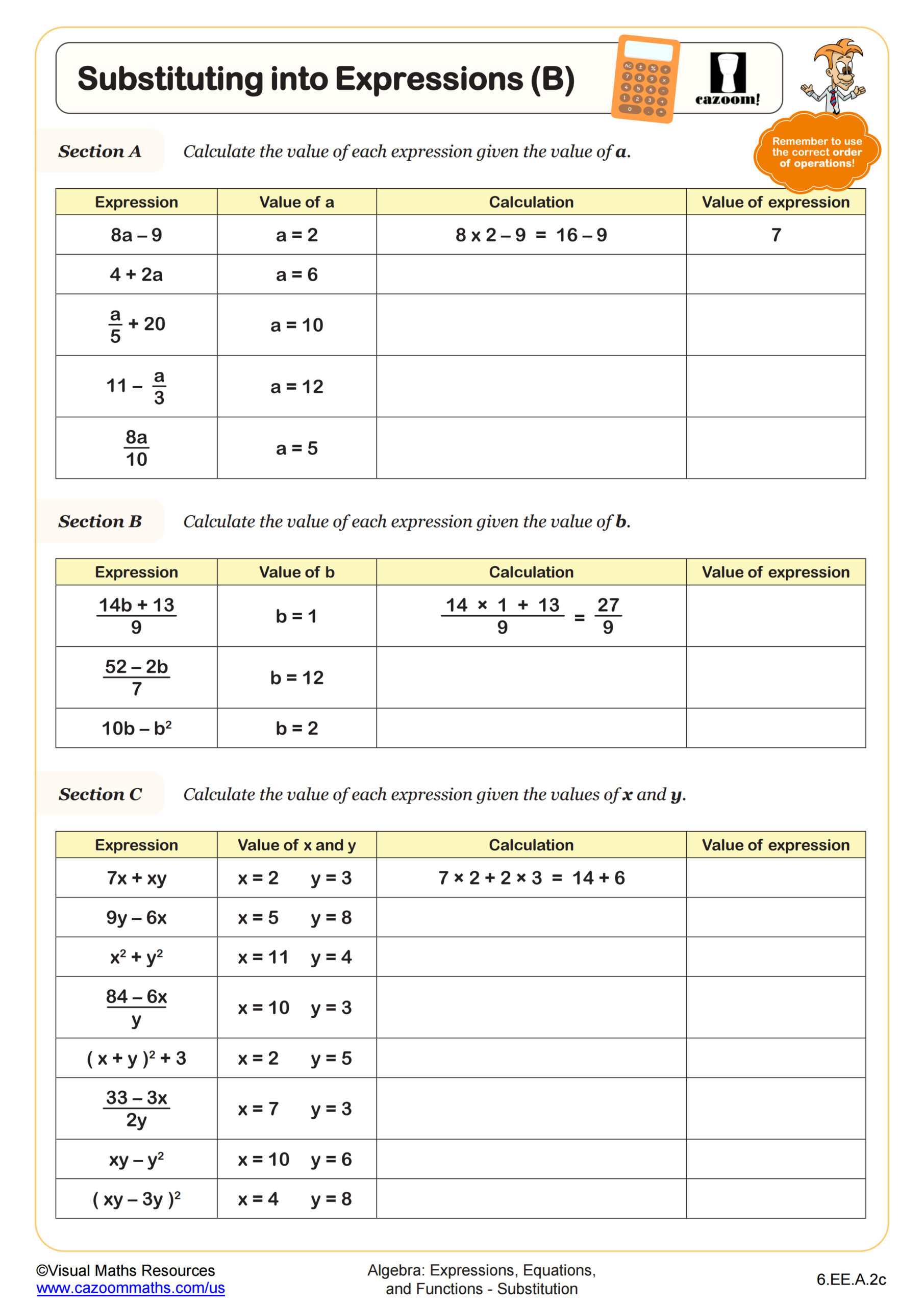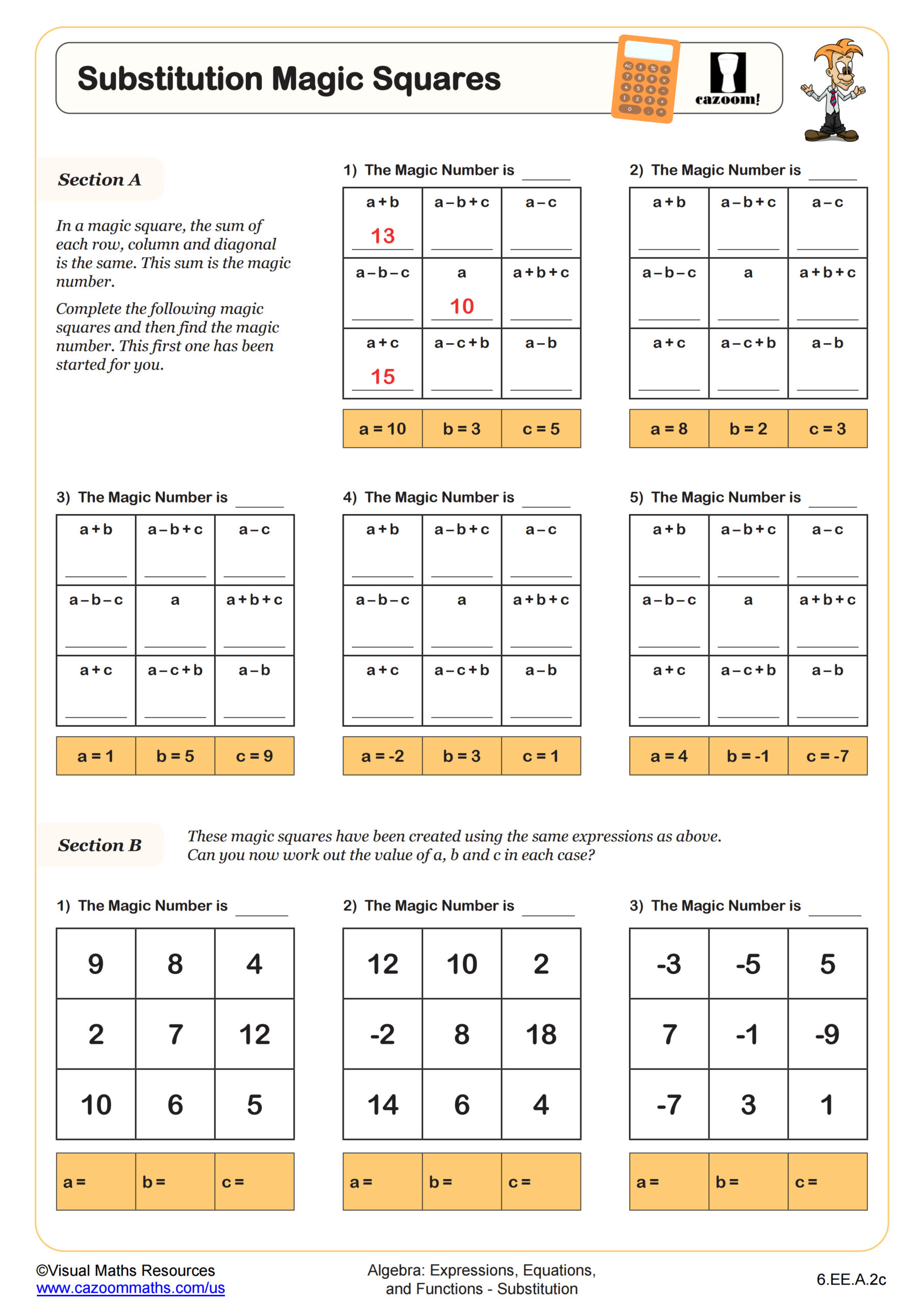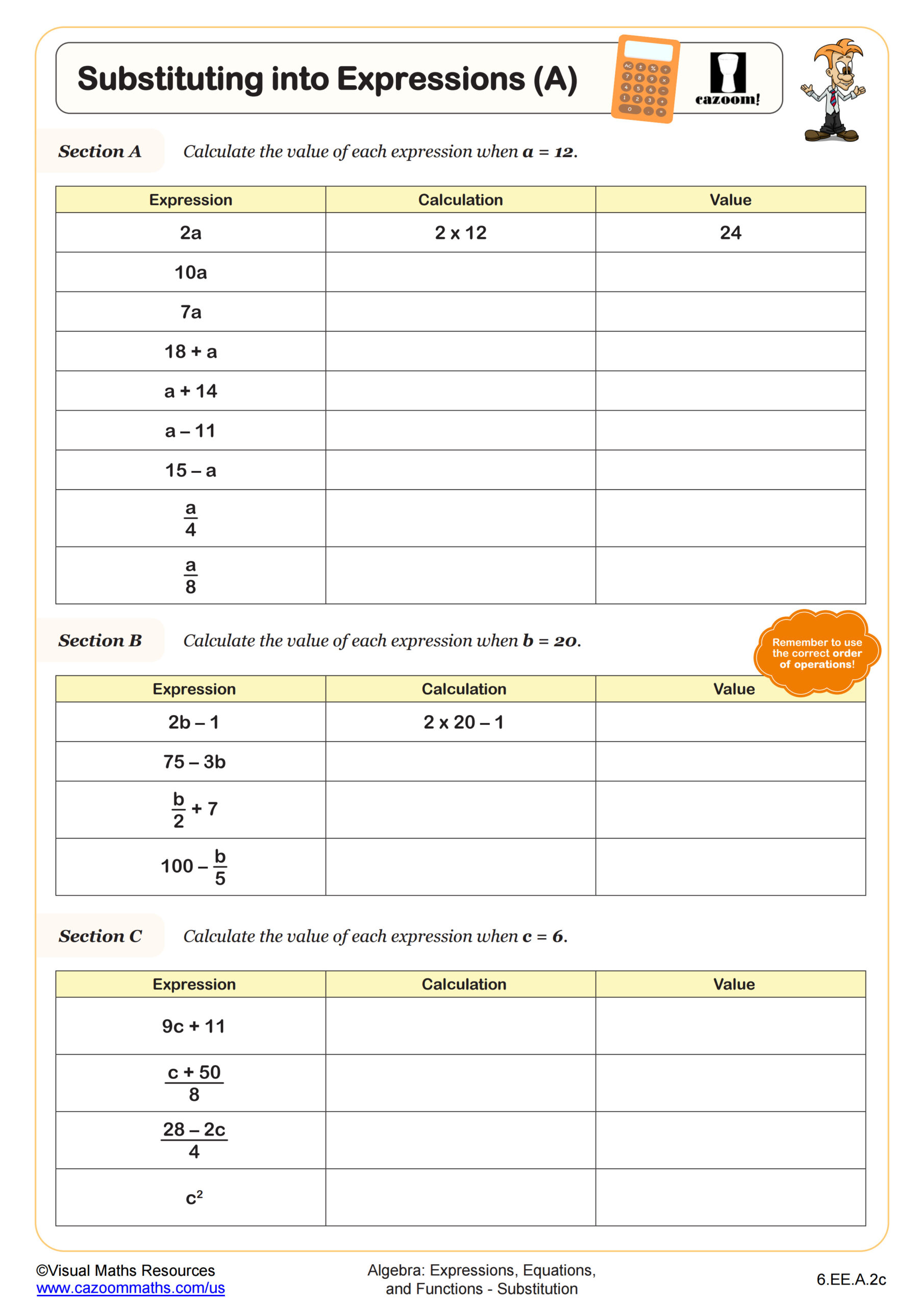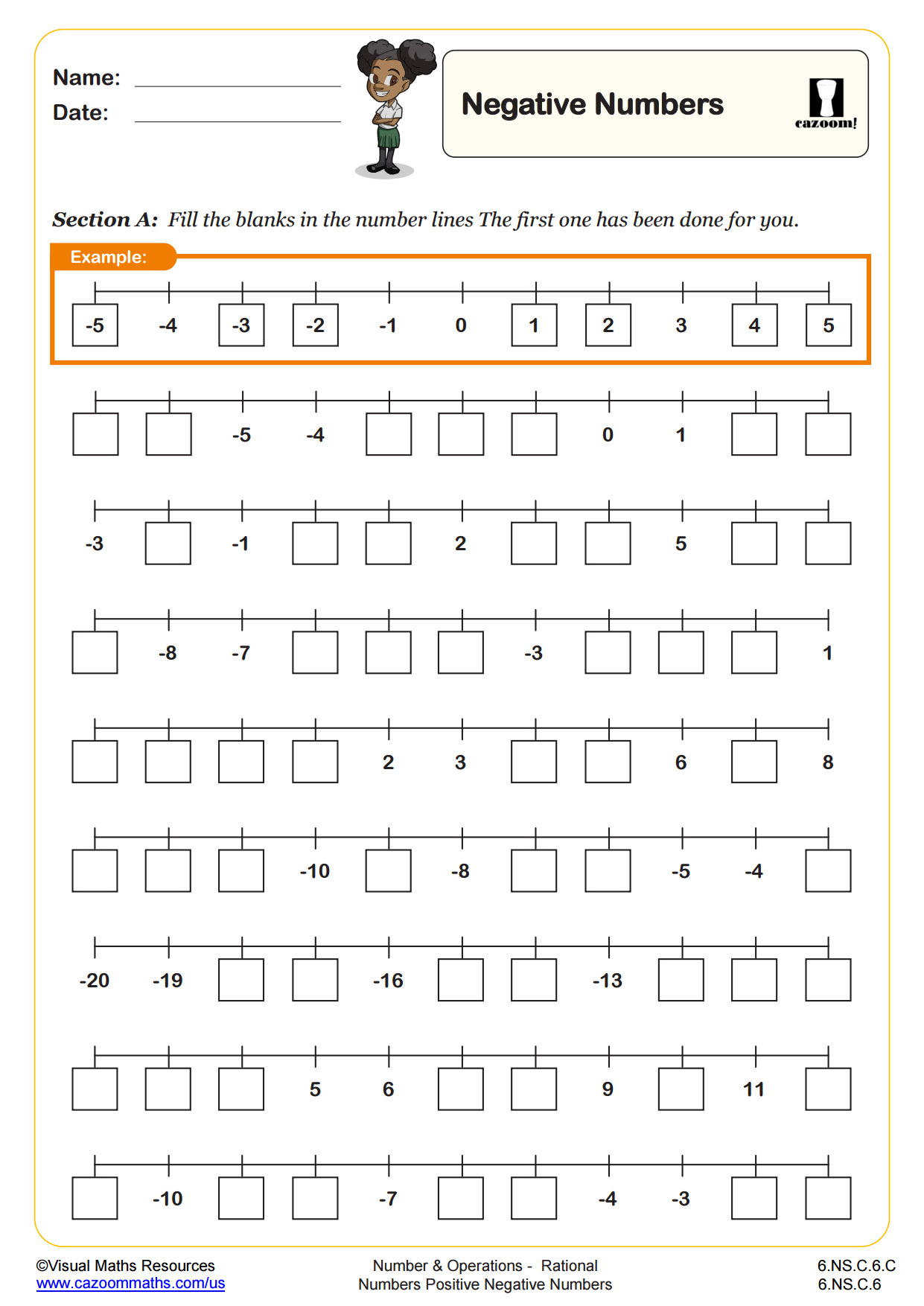Substuting into Expressions using Negative Numbers WORKSHEET
Apply and extend previous understandings of multiplication and division and of fractions to multiply and divide rational numbers. a. Understand that multiplication is extended from fractions to rational numbers by requiring that operations continue to satisfy the properties of operations, particularly the distributive property, leading to products such as (–1)(–1) = 1 and the rules for multiplying signed numbers. Interpret products of rational numbers by describing real-world contexts. b. Understand that integers can be divided, provided that the divisor is not zero, and every quotient of integers (with non-zero divisor) is a rational number. If p and q are integers, then –(p/q) = (–p)/q = p/(–q). Interpret quotients of rational numbers by describing real-world contexts. c. Apply properties of operations as strategies to multiply and divide rational numbers. d. Convert a rational number to a decimal using long division; know that the decimal form of a rational number terminates in 0s or eventually repeats.
Substuting into Expressions using Negative Numbers WORKSHEET DESCRIPTION
Broken up into six different sections, this worksheet provides ample practice of substituting positive and negative integers into expressions containing up to two variables.
In Section A, students are given a value for a and b (one positive and one negative) and will substitute these into expressions such as 3b. Section B is similar; however, this time, both a and b are assigned negative values.
Sections C and D contain expressions involving addition and subtraction and include numerical terms.
Students will have to consider the correct order of operations to complete sections E and F where expressions are made up of up to three terms and three operations.
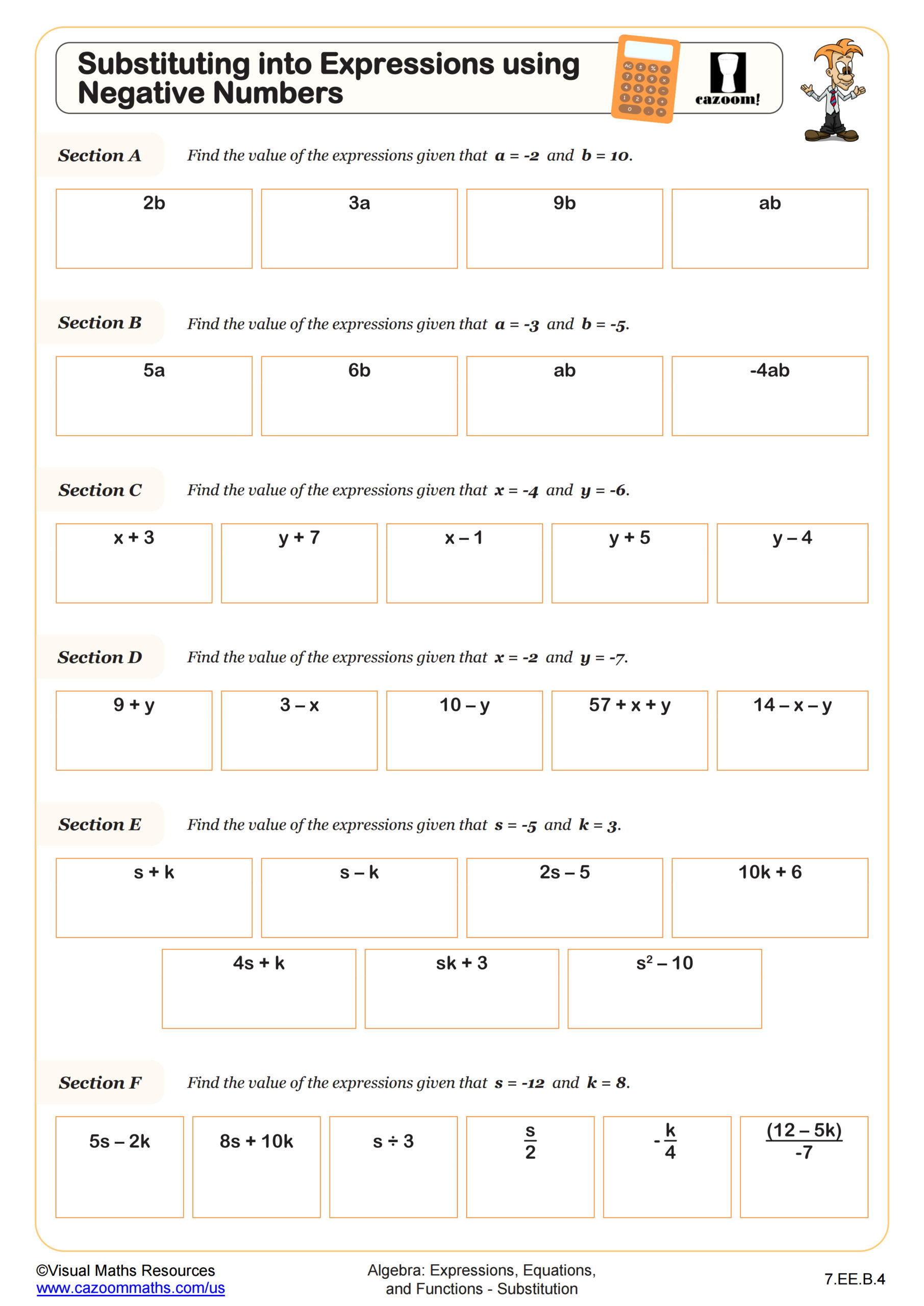
RELATED TO Substuting into Expressions using Negative Numbers WORKSHEET
Frequently Asked Questions
This substuting into expressions using negative numbers worksheet is designed for students in 7th Grade and aligns with Common Core State Standards.
